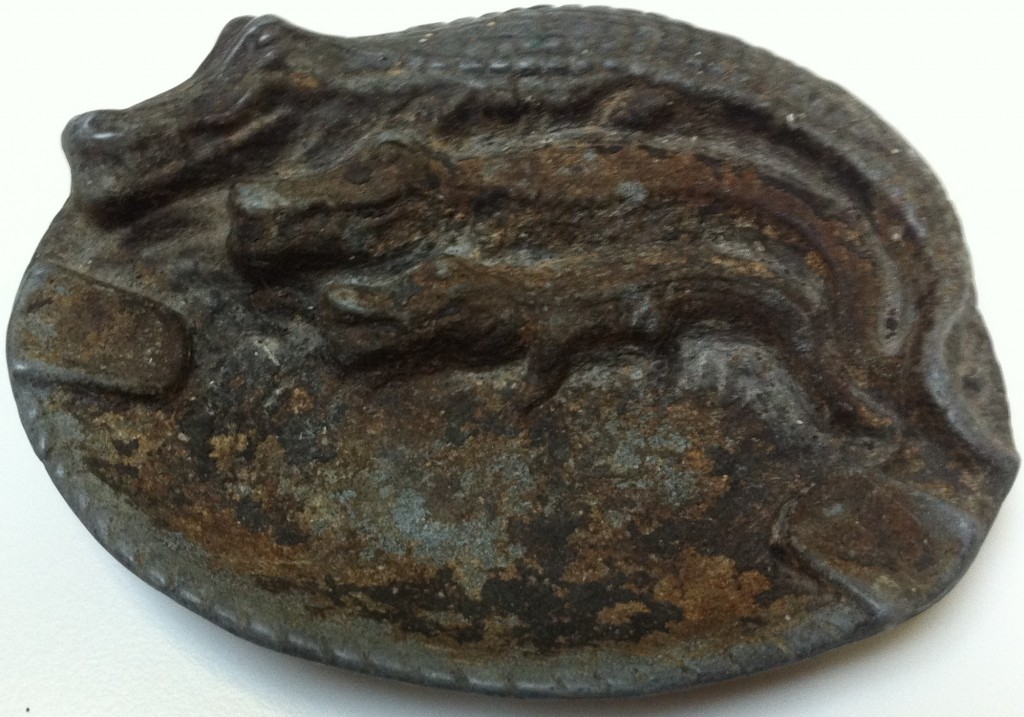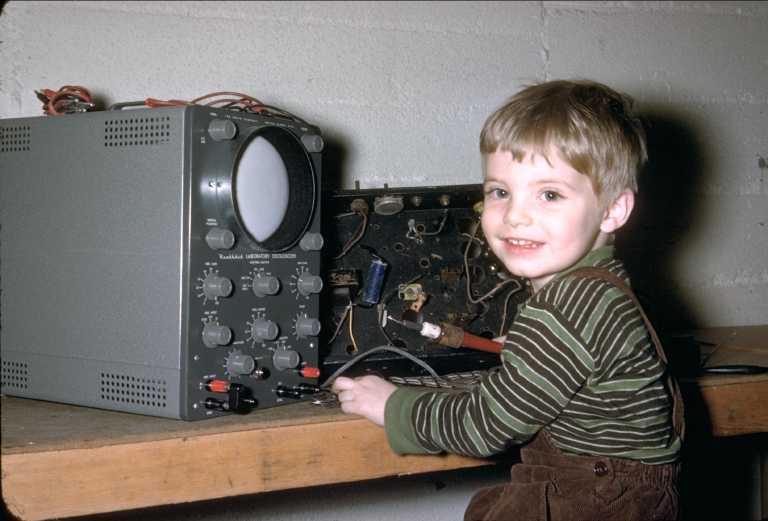As Dad would arrive home from work in 1957, Mom would have supper ready for us to eat in the kitchen at our formica table. Dad sat at one end in front of the fridge, Mom to his right with her back to the stove. I sat opposite Dad, and Tom, after graduating from the high chair between Mom and Dad, sat to my right, opposite Mom. In retrospect, I imagine that Mom and Dad talked about what they had done during their respective days, but I know that Dad would eventually turn to me. After exhausting my three-year old’s recital of playing, napping, and watching American Bandstand (while Mom napped in the afternoon), Dad would teach me math.
The earliest lessons I recall were about square roots, which he taught by asking the question — “Q. What’s a square root?”; giving an answer — A. It’s the number that multiplied by itself gives you the number;” and following with an example — “Four is two times two.” Clearly we must have already covered multiplication, and the examples were pretty simple to follow — “What’s the square root of four? What’s the square root of nine?” Later he introduced a trick “What’s the square root of three?” and I needed to learn about decimals. The answer was 1.732, which I was to remember as the year George Washington was born.
Eventually we did a simple cube root, and having conquered these simple exponents, Dad moved on to logarithms — “A. The number of times you multiply the logarithm by itself to get the number.” He would ask, ‘What’s the logarithm of 100?” and I eventually understood it was 2, as in ten times ten. Of course this dinner table conversation was of little interest to Mom, who claimed she didn’t understand mathematics, or Tom who was barely speaking at the time. Fortunately my lessons continued, thanks to Dad’s curiosity and desire to pass along his knowledge to me.
Dad subscribed to the major electronics magazines of the time, which included circuits of all types. I recall he built some electron tube audio amplifiers, and some Heathkits — an oscilloscope and an audio oscillator. But digital technology was on its way and Dad decided to explore it by building a transistor based flip flop, with an oscillator to alternate between on and off states — zero and one. The flip flop was built on a piece of knotty pine left over from the wainscoting Dad put up in the kitchen, was powered by a dry cell (9-volt PP10 if memory serves), and turned on a neon lamp, which was probably used as the bistable oscillator. I remember begging Dad to plug in the dry cell after dinner so I could watch the neon light go on and off. He always put it atop the china cabinet in the dining room — probably to keep my fingers away from shocking voltages.
As he built projects from ‘sistors and densors’ (as I called resistors and condensers), I would sit next to Dad at his workbench in the basement. His Lucky Strike cigarette and the soldering iron would rest on his alligator ash tray, collecting ashes and flux while he worked. While I wasn’t ready to understand any of these circuits, I was very eager to help and even more eager to pose.


To help us understand his work while he was working for Sperry Gyroscope, he brought home a small gyroscope. The equipment demonstrated the rotational stability and precession used to sense motion for the inertial guidance systems.
I was really lucky to start my technical education at such a young age and from such a generous teacher. He made me who I am.
What a lovely tribute to your Dad.